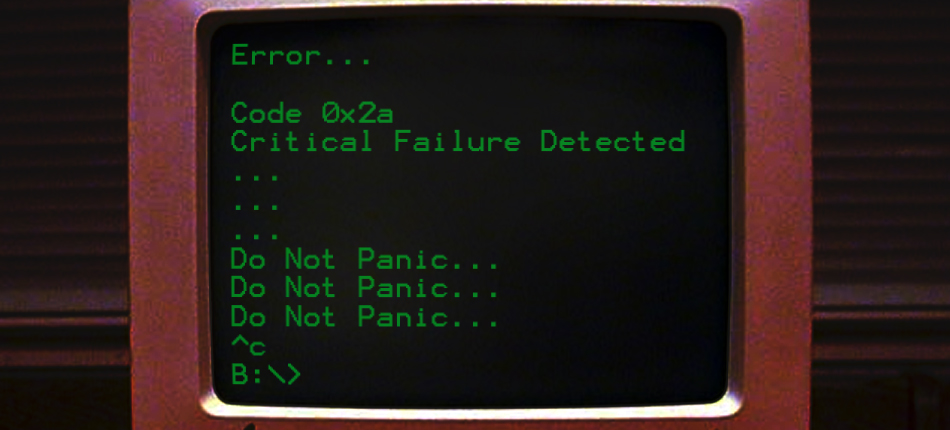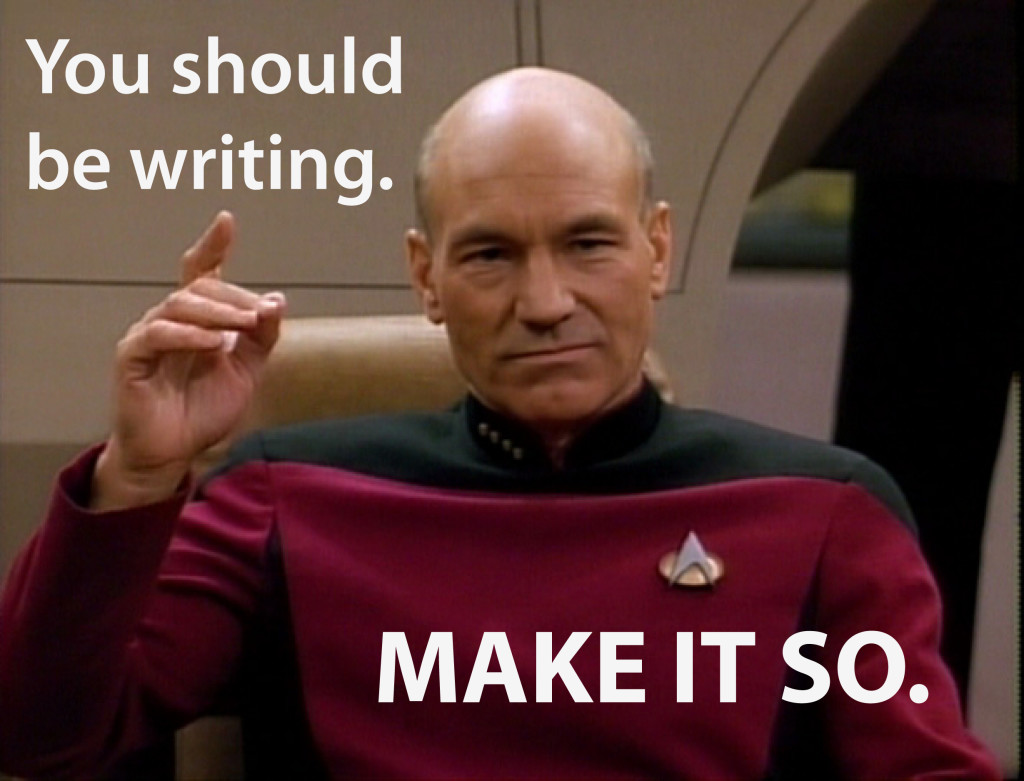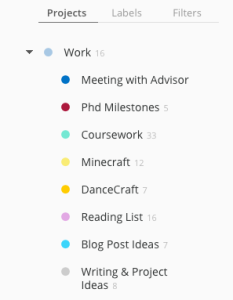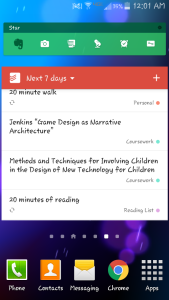Tag: research papers (Page 3 of 5)
I was recently interviewed by a reporter from the New Scientist who wrote a piece on our paper, “Will I always be not social?”: Re-Conceptualizing Sociality in the Context of a Minecraft Community for Autism, that I will be presenting on May 9 for CHI 2016.
Minecraft is helping children with autism make new friends: https://t.co/jCRTOSdY6L pic.twitter.com/tYyutgd38T
— New Scientist (@newscientist) April 28, 2016
We were also covered by “Don’t Hate the Geek” in their article Minecraft Server for Autistic Gamers on May 2, 2016!
Want to find out more? Please see our full paper that has been accepted to CHI 2016. Full citation and link to the pdf below:
POST LAST UPDATED: May 2, 2016.
Related Posts:
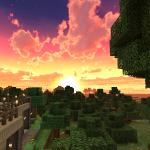
A Place to Play

“Autsome”: Fostering an Autistic Identity in an Online Minecraft Community for Youth with Autism

CHI 2019 Honorable Mention
I’m happy to report I successfully passed my advancement to become a PhD Candidate!
My talk was titled “Technology Mediated Socialization for Children with Autism.”
Committee: Gillian Hayes (Chair), Rebecca Black, Mimi Ito, Josh Tanenbaum, and Tom Boellstorff
Abstract: Traditional face-to-face social interactions can be challenging for individuals with autism, leading some to perceive and categorize these individuals as less social than their peers. For example, autism can be accompanied by difficulty making eye contact, interpreting some nonverbal cues, and performing coherent verbal utterances. While these challenges can be interpreted as an inability or lack of desire for social interactions, researchers have begun to explore how to expand the definition of sociality for those with autism. My research explores how technology can support alternative means of sociality, particularly for children with autism engaged in social play. In this advancement talk, I will present two research studies: SensoryPaint and Autcraft. SensoryPaint is a multimodal sensory environment built to enable whole-body interaction with the Kinect. Evaluation of SensoryPaint was conducted in two stages: a lab-based study and a deployment study. Results from this study show how these systems can promote socialization. My second research project explores Autcraft, a Minecraft community for children with autism and their allies. I will present results from on-going ethnographic work exploring the community’s Minecraft server and other community affiliated social media. Results from this study highlight ways in which community members use technology to create a safe environment for children with autism to explore alternative forms of social expression. Findings suggest an expansion of how sociality has traditionally been conceptualized for individuals with autism and how technology plays a key role in facilitating this new sociality.
This spring has been rough in terms of my time management. Deadlines have crept up and the big ones seem to be converging. The past two weekends I have found myself trying to cram in finishing everything on my to do list that somehow didn’t get done during the week (including reading a couple of books, writing drafts of papers, and coding a prototype of our DanceCraft software).

After reading Time Tracking – Getting it Right, I was inspired to start keeping track of my time. Starting tomorrow, I’ll be keeping a log of activities, estimated time to complete, and time spent for the next week. Hopefully by next weekend I’ll have a little better idea where all the time goes.
Do you know where your time goes?
I will be continuing on in my series about my workflow as a graduate student (overview in Part 1). Last week, in Part 5, I talked about free writing. This week I will discuss the next step in the writing process for me: memos.
Memos
For me, memos look a lot like my free writing. They are mostly unformatted text (I will throw in an occasional header for sanity reasons). The big difference is memos are focused. They usually start with a question or idea that I want to expand upon. Maybe I am working through collected data or some literature I have just read. Perhaps I am asking the 10 questions about my research (https://depts.washington.edu/csclab/2009/11/the-10-questions/). Memos are a great way to start thinking through without worrying about the consequences (no grammar check, no worry about formatting, or if there’s a point).
Another difference between free writing and memos is the likelihood someone else might read a memo. My free writing I don’t share with anyone. However, my memos might get shared with co-authors or my advisor – especially memos that I have iterated on and are in a little better shape after a couple of drafts.
Really rough memos I do in Evernote. One nice thing about Evernote is you can link notes to each other. So as I am writing I can paste in links to other relevant notes (which would include other notes I’ve written, pdfs I’ve saved, or media I’ve clipped from the web).
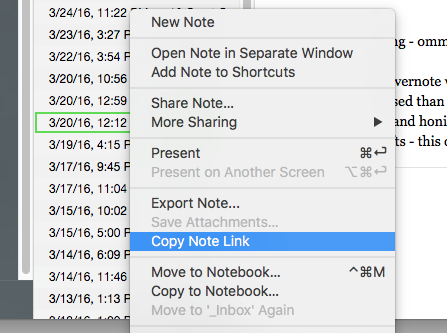
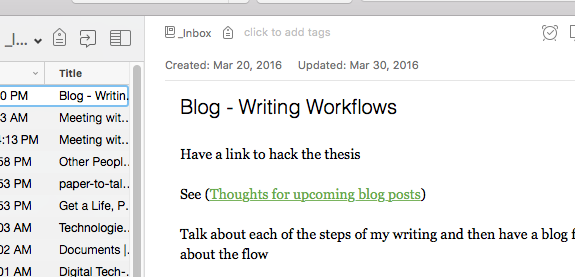
If my memos make it to the stage where I am doing multiple iterations or drafts, I switch to Word. This is mostly so I can save versions as needed to Dropbox and so I can share easily with co-authors and my advisor.
Memoing is an important step in between free writing and starting drafts of academic papers. This is where the big thinking happens. Granted, you are thinking your way through the whole writing process, but this stage is where the questions get asked, the connections get made, and the literature starts to make sense. I have found it makes the next step, which I will talk about next week, much, much easier.
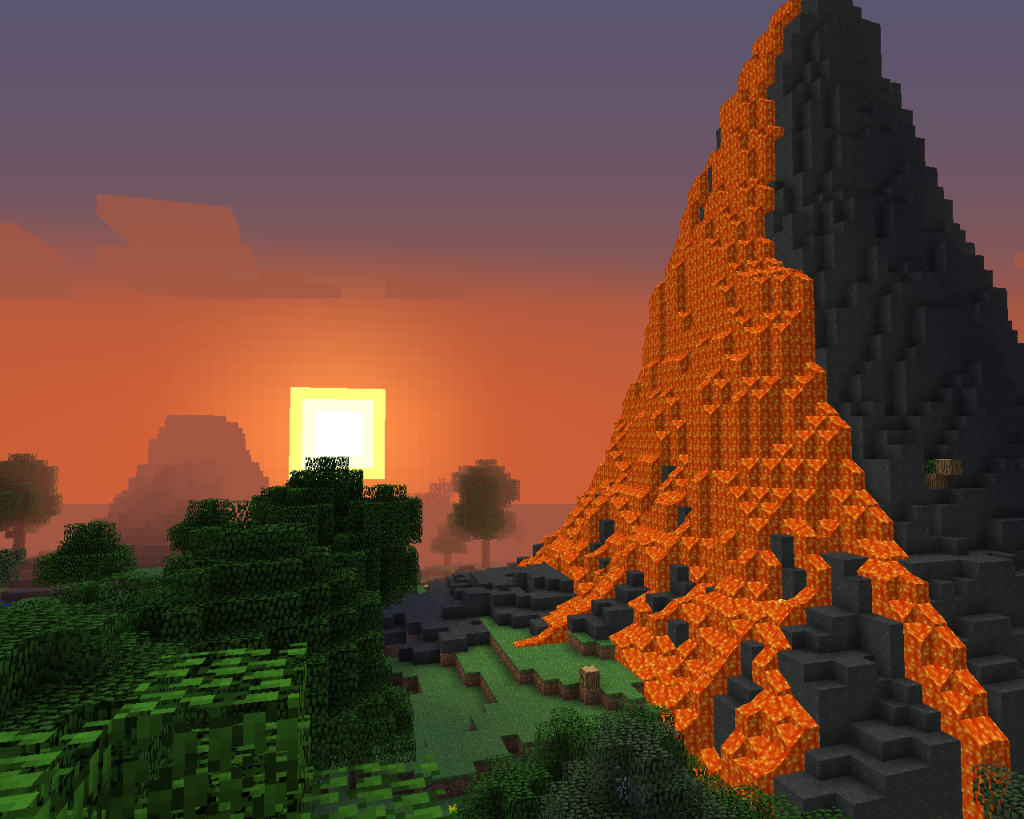
“Will I always be not social?”: Re-Conceptualizing Sociality in the Context of a Minecraft Community for Autism
Preview: Members of the Autcraft community for children with autism and their allies use a variety of social media platform, centered around Minecraft. The community’s use of various technologies facilitates the expansion of how members can socialize with one another, giving them opportunity to explore their own sociality, expand how they would like to be able to socialize, and deepen their connection with other members of the Autcraft community.
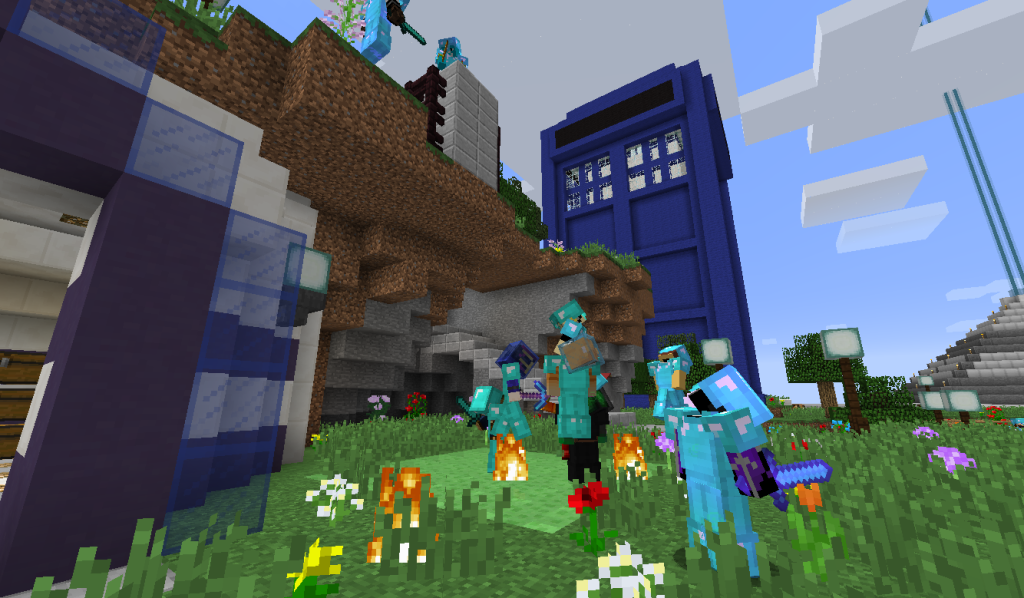
Autcraft community members playing a game together.
“I love being a member of the [Autcraft] community and love spending time with my ‘family’ here. … A place I was accepted for … just being ‘different’ than others.”
If a child finds face-to-face conversations challenging and feels isolated from their peers at school, where can they go to make friends? Online communities have the potential to support social interaction for those who find in-person communication challenging, such as children with autism. Unfortunately, online communities come with their own set of problems – cyberbullying is particularly troubling. We studied how one online community, Autcraft, through a variety of social media platforms, practices and defines how they are social.
Autcraft is a Minecraft community for children with autism and their allies run by parent volunteers. The goal of the Autcraft community is to have a safe space for children with autism to play Minecraft free from harassment and bullying (for more information visit the Autcraft website). As part of our study, I have been conducting an on-going ethnography within the community (see our paper for details). This study included analysis of activity within the Minecraft server, forums, website, Twitter, Facebook group, YouTube, and Twitch.
Our analysis demonstrates how members of the Autcraft community search for, practice, and define sociality. These results indicate more broadly how people may increasingly find new ways to express themselves and create a sense of community as emergent forms of media change the nature of our social landscape. Our exploration of Autcraft adds to a growing body of work about social platforms by showing how flexible, multimodal communications not only “keep the game going” but also can have profound effects for self-expression and feelings of social belonging.
Autcraft community members engage in the following:
- Searching For and Finding Community. Minecraft serves as a bridge or means of entry for members of this community. The game plays a key role, coupled with other forms of social media, in supporting children who are particularly known to struggle with finding social support. Autcraft—including the game, forums, Facebook page, and community-related videos—helps community members to not feel “alone.” Much like for other youth online, Autcraft members describe “hanging out” with their friends in Minecraft. Although they may not be meeting in person, members consider these relationships to be meaningful friendships. Autcraft, by its very nature of blending social interaction with strict rules of behavior and appealing game mechanics, comes together to form a space of cohesion, not difference, and of support, not scorn.
- Defining Sociality and Community. Although Autcraft community members often seek out social relationships through Autcraft as an augment to in-person relationships, some do not wish to seek out these in-person friendships. Those who prefer the majority of their socializing to occur online struggle with what it means to be “social.” Acceptance is a cornerstone to making being “different” more tolerable and reducing the social isolation and loneliness that frequently surrounds difference.
- Practicing Sociality. In practicing their social behavior, social connections are formed and maintained through a variety of media technologies, allowing members to use communicative practices best suited for them, both as individuals and as a group. The community sets the stage for sociality by encouraging members to “Be Kind, Be Respectful, Be Responsible.” On an individual level, Autcraft provides powerful common ground for players, a key foundation to many friendships. Not only do those who join the community share a common interest in Minecraft, they also all have claimed to be either an ally of, or someone with, autism. This is a requirement the community regulates carefully. These two components of the community help lay the groundwork for friendship because they represent part of a person’s shared interest.
By using various platforms, members of the Autcraft community are able to form deeper friendships with one another, if so desired. Being able to foster these relationships across the myriad platforms creates cohesion in the community. Two members may meet through an advertisement on the forums for builders, build a project together, and then go on to create YouTube videos together of the experience. This facilitates the expansion of how members can socialize with one another, giving them opportunity to explore their own sociality, expand how they would like to be able to socialize, and deepen their connection with other members of the Autcraft community.
For more details about our methods and findings, please see our full paper that has been accepted to CHI 2016 (to appear in May 2016). Full citation and link to the pdf below:
Ringland, K.E., Wolf, C.T., Faucett, H., Dombrowski, L., and Hayes, G.R. “’Will I always not be social?’: Re-Conceptualizing Sociality in the Context of a Minecraft Community for Autism”. Proceedings of the 2016 ACM CHI Conference on Human Factors in Computing Systems, ACM (2016). [Acceptance Rate: 23.4%] [PDF]
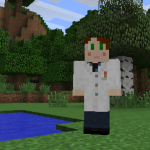 Acknowledgements: We thank the members of Autcraft for the warm welcome to their community. We would like to thank members of LUCI for their feedback on this paper. We would also like to thank Robert and Barbara Kleist for their support. This work is covered by human subjects protocol #2014-1079 at the University of California, Irvine.
Acknowledgements: We thank the members of Autcraft for the warm welcome to their community. We would like to thank members of LUCI for their feedback on this paper. We would also like to thank Robert and Barbara Kleist for their support. This work is covered by human subjects protocol #2014-1079 at the University of California, Irvine.
Related Posts:

A Place to Play

“Autsome”: Fostering an Autistic Identity in an Online Minecraft Community for Youth with Autism

CHI 2019 Honorable Mention
As I mentioned in Part 1 last week, I will be going over my various methods for managing my workflow. Today, I will be discussing general task management.
Task Management
First, I will start discussing my workflow with the tricky topic of task management. I’m starting here because my task management system is fairly easy in comparison to some of my other workflow mechanisms.
My tasks can be broken down into Work and Personal. I will discuss my Work tasks here even though I generally use the same exact system for Personal tasks as well (because it’s all about keeping myself sane). Work tasks are then broken down into their various categories: general, PhD milestones, reading, writing, research (which is broken down by project). You can see these listed as “Projects” in Todoist below.
For task management I use Todoist. I have tried several different to do list apps over the last few years and Todoist works the best given my needs. It meshes well with my other tools, is robust, and very flexible. It also has the added benefit of being somewhat reinforcing with its fun “karma points.”
Todoist is great because it lets you write out your task such as “write 1500 words every weekday” and it will figure out when the next time you need to complete the task is. You can read about other cool ways to use Todoist here and here.
Tasks for me, once divided into their subcategories, fit into a few different molds: one-off tasks, repeating tasks, and floating tasks.
First are the one-off tasks. These are things I only have to do once and then they are done. These are easy to just go to Todoist and say “write final paper for Inf 232 March 14.”
Second are the repeating tasks. These include my daily reading and writing (self-imposed) requirements, among other things. For example, “1500 words very weekday.” This would also include my meetings and classes. For example, “lab meeting every Monday until June 9” or “send weekly update every Monday noon.” And yes, I include everything as a to do item on my list – tasks, drafts, things I have read, meetings, and so on.
These first two task types (the one-off and the repeating) then appear on my daily or 7 day task list. I can see them coming or I see them as past due if I missed something. I use this extensively in my daily routine. This is how everything gets done and I stay on track. I even include tasks such as “update blog every Thursday” and “clean out email inbox every Friday” just to keep up with the things I normally put off as unimportant (and, therefore, never get done).
Third are the tasks that do not strictly have a due date. These floating tasks are more likely to be things such as my reading list or writing ideas. My reading list is just a list of things I plan on reading (soon). I add to it as new articles come across my Google filters or my advisor suggests an article. Writing ideas are just brief thoughts about things I might want to write about at some point. They are good for the days I have writers block and I can’t think of what to write. I include all kinds of things in this list including blog ideas, thoughts about my research, potential future articles to flesh out for a conference or journal, even things that might evolve later into new research or my dissertation. I also keep a floating task list of things I need to discuss with my advisor. That way, I can just pull up my “Meeting with my Advisor” list and check things off as I go over them with her.
I keep my 7 day task list at hand on my phone, so I can check things off on the go:
That sums up my basic task management. Next week, in Part 3, I will discuss how I manage my readings and citations.
I was recently incapacitated by whatever illness was going around campus and when the fog finally lifted I finally appreciated how productive I am on a daily basis. It was time to triage my to do list and I knew some things were just not going to get done when I wanted them to be. However, since my maternity leave 6 months ago, I have been spending quite a bit of time working on my workflow, so things weren’t as dire as they could have been.
What do I mean by workflow? I mean the tools and procedures I have put in place to make sure that my project gets done in a timely, efficient manner. My project in this case is my PhD. And seeing as ‘project PhD’ is HUGE, I knew I wanted to get these things in place before I really start working on my proposal this summer and dissertation shortly thereafter. What this means is I do the following things (and what’s not on this list is be Mom to an energetic, mobile-enough 6-month-old):
- reading (a lot of reading)
- research, including, but not limited to:
- building software/hardware
- interviews
- user testing/deployments
- observations (both in the physical world and virtually)
- collecting lots and lots of data
- service such as reviewing other papers, mentoring students, and helping with the graduate student association
- writing (a lot of writing)
So, in order to stay sane and get everything done, I’ve been devising a way to automate some of my to do list and task and streamlining everything as much as possible. Some of the tools I use are: Google Calendar, Evernote, Dropbox, NVivo, Todoist, Slack, IFTTT, and Scrivener. I will be going over how I use each of these in detail over the next several blogs. They will be roughly in the following order (to be updated with links as they are posted):
- Task Management – Part 2
- Reading – Part 3
- Writing – Part 4, Part 5, Part 6
- Data Collection and Management
- Emails
